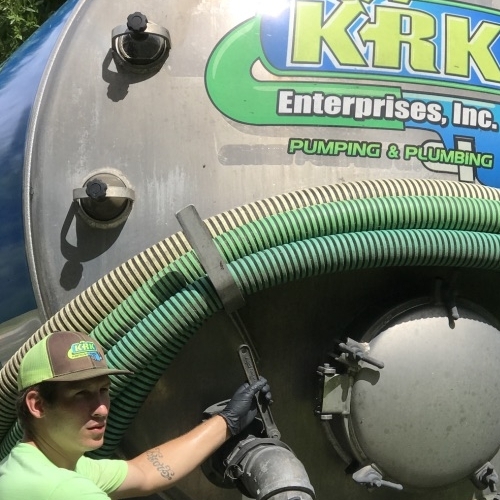
Is there a difference between residential and commercial drain and sewer cleaning?
After all, plumbing is plumbing, right? Yes, both residential and commercial plumbing have the same basic functions using the same materials. However, when it comes to commercial drain cleaning, there is a difference. Why?
When it comes to commercial plumbing versus residential, there are three big differences:
- The Size
The size and scope of commercial drain cleaning and plumbing requires handling more people, more pipes, and more outlets. A business may require separate facilities for customers from their employees, which requires the ability to handle a bigger demand. - Multiple Floors
Residential plumbing, for the most part, is a maximum of two floors. Commercial plumbing, like an office building, will have facilities on every floor with sinks and toilets. These multiple floors require the pipes and water pressure to be sufficient which needs a strong gravity pull, something a commercial plumber would have a better understanding. - Diversity of Problems
The problems are basic for both residential and commercial plumbing and drain cleaning. However, commercial plumbing and drain cleaning has more issues that can be approached with more solutions. Commercial plumbing has more codes and standards that would never fit a residential setting.
How do you clean a commercial drain?
For a plumber that services commercial properties, knowing how to unclog a commercial drain of different varieties is an absolute must. You never know what kind of commercial drain cleaning you’ll be faced with when you take a service call.
A restaurant’s kitchen sink is an essential part of its operation. When the sink drain is clogged in a restaurant, business almost comes to a standstill. Not as much because of the inconvenience, but the health codes they have to maintain.
A plumber that is assigned to commercial drain cleaning will approach the job with a commercial grade plumber auger first. The metal cable is placed down the drain and into the line where it breaks apart the clog and scrapes the pipe clean. The electric motors spins the metal cable, pushing it forward, building up torque that breaks the clog. They will then use a video camera and small screen TV to check the drain and pipe, making sure the snake got everything and no damage is done to the pipe.
Will bleach unclog a drain?
For residential or commercial drain cleaning, bleach is not the product that will do the job. Use up to three-fourth of a cup to deodorize, sanitize, and kill germs in a drain, the run hot water in the drain for 3 to 5 minutes. However, bleach is not a drain cleaner as far as clogs.
What do plumbers use to unclog drains?
There are three different tools a plumber will use for commercial drain cleaning in the kitchen or bathroom sinks:
- DRAIN AUGER: The drain auger is a plumber’s best friend for residential or commercial drain cleaning of clogs. The commercial version is electric and has a long metal coil that is placed in the clogged sink. The motor is activated and the coil, working like a corkscrew, finds the clog and busts it up while scraping the sides of the pipes.
- HYDRO-JETTER: Hydro-jetting is the process of forcing hot water into the drain so hard that it busts the clog up and pushes it on through This type commercial drain cleaning will blast through the buildup of food, grease, soap scum, and more.
- VIDEO EQUIPMENT: This process is typically used after the above two methods did not clear the clog. The plumber will place a long fiber optic cable into the clogged drain. This will display pictures on a miniature video camera. The camera displays a picture of the drain on a tiny television. The plumber is able to see what is causing the clog or if the plumbing is broken.
Can snaking a drain damage pipes?
Playing with snakes is dangerous, including using a plumber snake for residential or commercial drain cleaning. They are available at retail home improvement centers, and you should follow the directions exactly has the manufacturer states. If not used properly, yes, a plumber’s snake can cause severe damage to the pipes.
For a clog that you can’t clear using a plumber snake, call a plumber. They have professional size snakes they use on residential and commercial drain cleaning jobs. They are typically bigger and stronger, and if not in untrained hands can be extremely dangerous.
How to unclog commercial toilet
When it comes to commercial drain cleaning service for the toilet, it is done much like unclogging the toilet in a residential setting, often the culprits are the same: overabundance of toilet paper or feminine products.
In most cases, the basic toilet plunger will clear the clog, but the plumber will also have the same commercial grade plumber auger with the metal cable. The same process is used as it is for the commercial drain cleaning of kitchen sink.

Why do plumbers hate Drano?
If there is a monster in the commercial drain cleaning business, it is products like Drano. This harsh chemical, and others like it, have the potential to be unsafe for humans, pets, and the plumbing too. Yes, it would be the easiest way for plumber to provide commercial drain cleaning service, but it isn’t the safest nor is it widely sued. If you have leftover Drano product, disposing of it is challenging and unsafe for the environment.
How do you know who to call for commercial drain cleaning service? You can ask your neighbor or realtor. You can also do an internet search for “commercial drain cleaning near me”, making sure the plumber you all does service commercial property. Call 800-330-7686 today for your commercial drain service in Fort Pierce and Port St. Lucie, Fl.


















